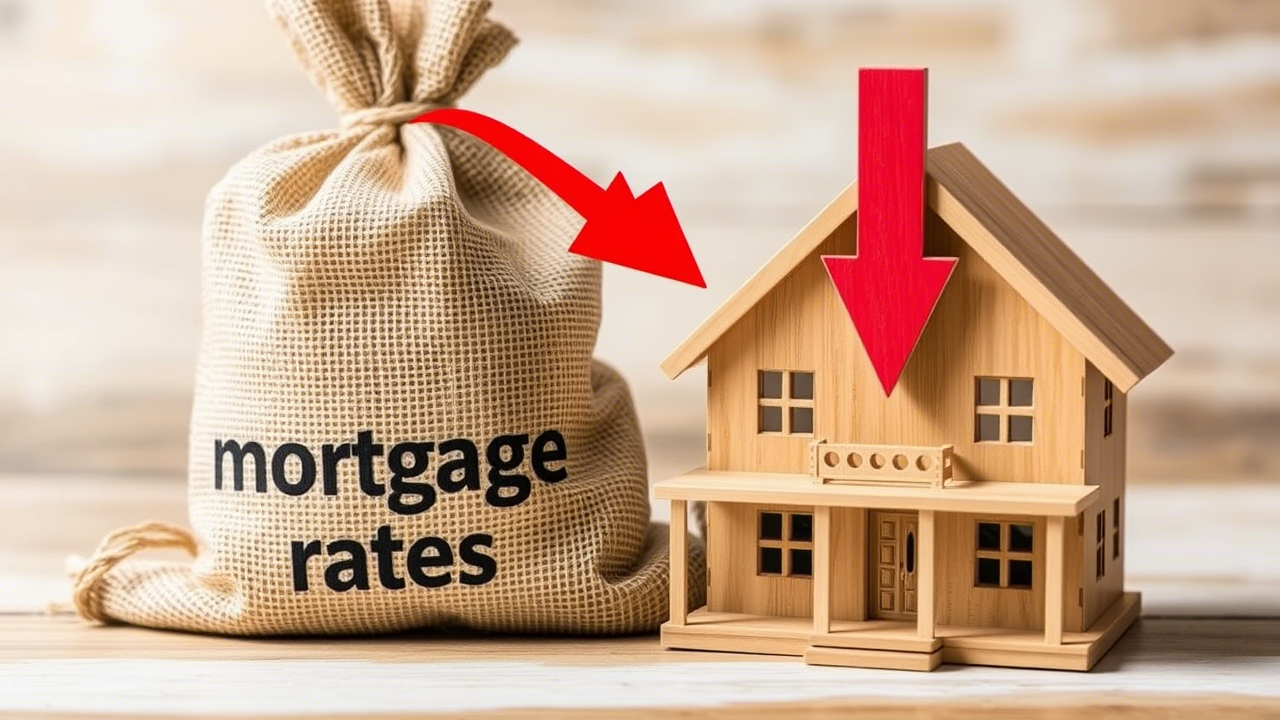As someone who’s been following real estate trends closely, I can’t help but ask: is this small drop in mortgage rates a turning point or just a temporary blip?
Mortgage rates fell for the second consecutive week, ticking down from 6.85% to 6.84%. It’s a tiny move — just a basis point — but it highlights a key moment in a market that’s been under pressure for nearly two years.
Table of Contents
ToggleHow Falling Mortgage Rates Could Impact the Housing Market
According to Freddie Mac (reported by the Associated Press on May 30, 2025), the average 30-year mortgage fell from 6.85% last week to 6.84%. That’s a small drop, but it comes amid a challenging climate for home buyers and sellers. Mortgage borrowing costs remain elevated and are influenced by factors ranging from Fed policy signals to bond market movements — particularly the 10-year Treasury yield. Meanwhile, mortgage applications jumped 13% last week, suggesting there’s some renewal of buyer activity, although home sales remain weak by historical standards.
My Take — 4 Ways Higher-For-Longer Will Shape Housing Market Decisions
Mortgage Rate Relief May Be Limited
It’s true we’re seeing a small drop now, but I think we’re far from a sustained downward trend.
The 10-year Treasury — a key mortgage pricing indicator — has dipped from 4.58% a few weeks back to 4.38%. But ongoing worries about federal debt and policy signals from the Fed may keep upward pressure on borrowing costs in the months ahead.
Higher Payments Will Continue To Impact Demand
Mortgage payments are now hundreds of dollars more per month than just a few years ago.
This dampening effects first-time buyers and move-up sellers alike.
As a result, total home sales fell last year to their lowest level in nearly 30 years — a dramatic slowdown in a typically strong market.
Mortgage Applications Suggest Some Demand Is Returning
Mortgage applications jumped 13% last week and are up 20% from a year earlier, a sign that some buyers are trying to take advantage of the small drop in borrowing costs.
This signals a glimmer of hope — particularly if inventories increase and prices stabilize.
Higher-for-Longer Will Separate Buyers, Sellers, and Investors
Some will wait for a perfect rate drop — but many will realize that’s not realistic and move forward anyway.
For sellers, pricing their home appropriately and making it move-in ready is key in a slow market.
For investors, opportunities may arise in less competitive segments — properties that need a bit of TLC or are less desirable in a weak market — yielding strong rental income over time.
Reader Guidance — Actionable Advice Based on Market Developments
For Buyers:
If you’re able to buy now, consider securing a mortgage while rates are relatively stable.
Mortgage applications are up, which signals competition might increase if you wait much longer.
- For Sellers: Price your home realistically and make sure it’s in move-in condition.
With many buyers staying cautious, you need to show clear value. - For Investors: Higher borrowing costs may create opportunities to find properties at a discount.
Consider adding rental properties to your portfolio, particularly in growing rental markets.
What is the 10-Year Treasury Yield, and Why Does It Affect Your Mortgage Rate?
A: The 10-year Treasury yield is the return investors demand when buying 10-year government bonds.
Mortgage lenders use it as a benchmark to set their mortgage rates — when the 10-year drops, mortgage rates often follow; when it climbs, borrowing typically becomes more expensive.
Subtle Solution — Tech-Driven Tools May Provide an Edge
As someone who’s studied this market’s movements for years, I know accessing reliable data quickly is key.
Tech platforms that track mortgage trends, pricing, and inventories in real time can help both buyers and sellers make smarter choices — whether you’re negotiating a mortgage rate or pricing a home accurately.
Reader Q&A (Bonus)
Will mortgage rates drop further in 2025?
Economists broadly expect 30-year mortgage rates to stay within the 6%–7% range this year.
Any drop will likely be gradual and influenced by the Fed’s policy signals and bond market movements.
Is now a good time to buy a home with mortgage rates near 6.9%?
It depends on your financial readiness and goals.
If you’re prepared to buy and plan to stay for at least 5–7 years, securing a mortgage now — instead of trying to time the bottom — may be a smart move.
Final thought:
Mortgage rate movements may seem small — a drop from 6.85% to 6.84% — but for a large mortgage, tiny tweaks translate into significant payments over time.
Instead of trying to time the market perfectly, it’s often smarter to match your decisions to your goals, financial readiness, and the opportunities you find in your local market.


